Bali is a beautiful place. It’s a great place for diving. Each diving place in Bali is special. Some places you can walk to from the beach. Some places you need to take a small boat called a Jukung.
If you like a challenge, there are more places to dive. In the Candidasa region, you can dive in strong currents. You can see sharks, big ocean fish, Mola Mola fish, and big Manta Rays. If you have more time, you can visit Menjangan Island. There, you can see deep underwater cliffs, very clear water, and friendly turtles. These are just a few examples of what you can see when diving in Bali. Each dive is a new adventure, showing you the many different animals in the ocean.
This article is a guide about seeing Mola Mola fish in Bali. This guide will give you tips to help plan your dive, tell you the best time to see Mola Mola, where to find them in Bali, what equipment you need, and how to get ready. Additionally, you’ll discover fun facts about Mola Mola. Get ready for a fun adventure diving with Mola Mola fish!
What is Mola Mola?
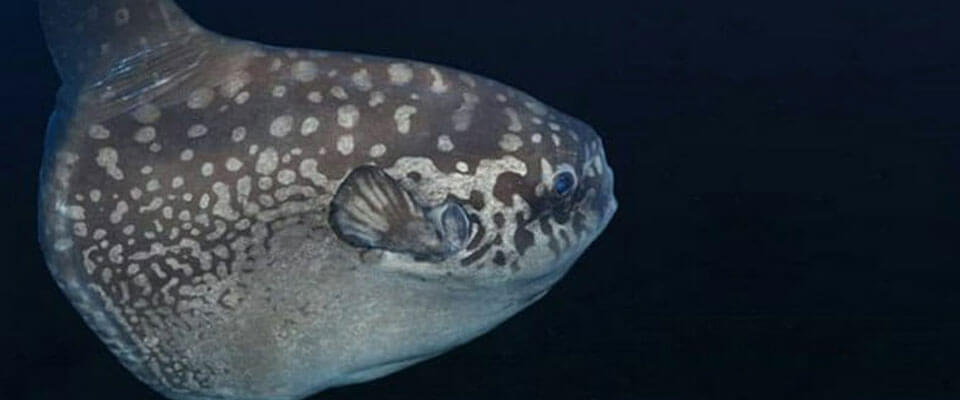
Mola mola, also known as the ocean sunfish, is a marine mammal that can be found in the Indian and Pacific oceans. It is an endangered species and requires protection.
The Mola mola is a large fish that can grow up to 10 feet in length. They are usually found near the surface of the water and are often mistaken for sharks. They feed on jellyfish, plankton, shrimp, and other small fish.
Diving with Mola molas is one of the main attractions for tourists visiting Bali. They are often found near Tanjung Benoa beach where they gather to feed on plankton during high tide periods.
Mola mola is a type of fish that lives in cold waters and at depths over 100 meters. This fish is large and flattened with an extended dorsal and ventral fin. Spending more time in the depths makes his body filled with parasites.
Best time to see Mola Mola in Bali

Mola mola Bali hunting season is coming soon. Prepare yourself to meet them.
Mola mola or Ocean Sunfish will swim ascent following upwell current with cold water temperature to clean his body from the parasite.
Usually, the waters in Nusa Penida getting cold from July to October when the water temperature drops to 18 degrees and can be even cooler in some places in Nusa Penida. During this period, is the season when the beautiful Mola mola can usually be seen in Bali.
Where to Find the Mola Mola in Bali?
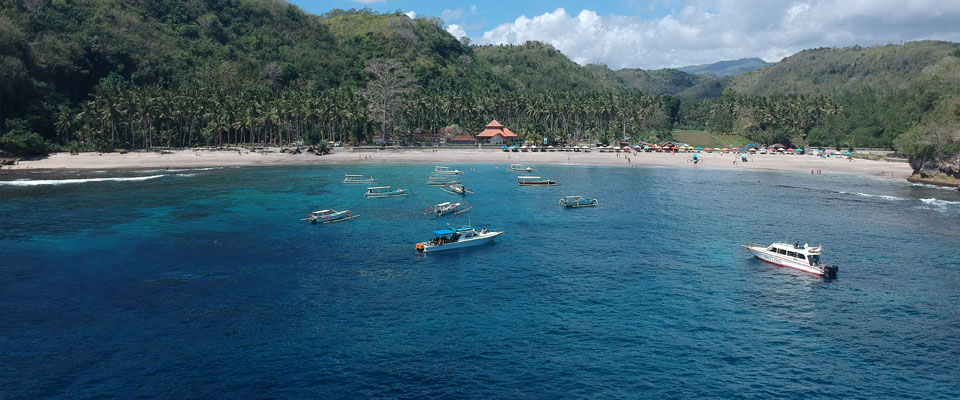
Nusa Penida is one of the best places in Bali for diving. It’s a gorgeous place to visit when you want to dive in Bali and it is also a suitable place for those who love snorkeling. Nusa Penida Island faces the Indian Ocean which comes with a perfect cold water circulation that is making the corals grow & the underwater life simply adequate to live in. Likewise, scuba diving in some diving sites in Nusa Lembongan and Nusa Penida are categorized as the advanced scenario, because of the strong currents coupled with the unexpected conditions can take place or changes in an instant. The most famous dive spot in Bali to see Mola mola is Crystal Bay, Nusa Penida.
Interacting with Mola Mola
As a place where two oceans meet, Nusa Penida waters act as home for various unique creatures. One of them is the Oceanic Sunfish or known as the Mola Mola. Mola Mola are rare creatures. Here are some tips when interacting with Mola Mola in Bali.
keeping a Safe Distance
As a diver, we expect you to know that touching marine animals is forbidden so we strongly advise keeping a distance from them. Mola molas are shy gentle giants, do not chase them. The more you chase them, the more they would swim apart from people. Although Mola Mola may look slow, they can swim relatively faster than you do.
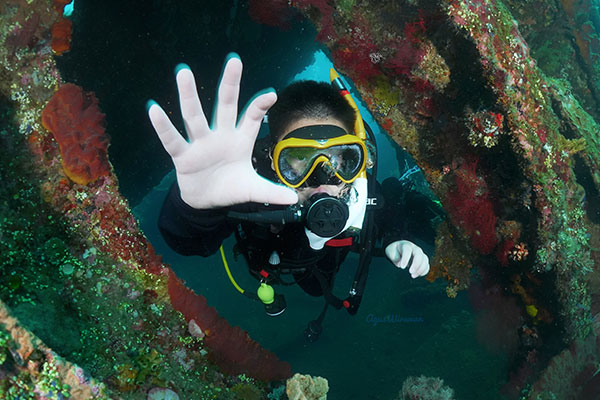
Minimizing Contact and Noise
Minimizing contact and noise is an essential part of responsible interactions with the Mola Mola, or any marine creature for that matter. These measures are crucial to avoid causing unnecessary stress or harm. As divers, we must remember that we are guests in their underwater world. Contact, even with the best intentions, can disturb these creatures, disrupt their natural behavior, or even potentially cause injury. Similarly, excessive noise can cause stress, alter their behaviors, and drive them away from their usual habitats. Use quiet, smooth movements while diving and refrain from touching, chasing, or cornering the Mola Mola.
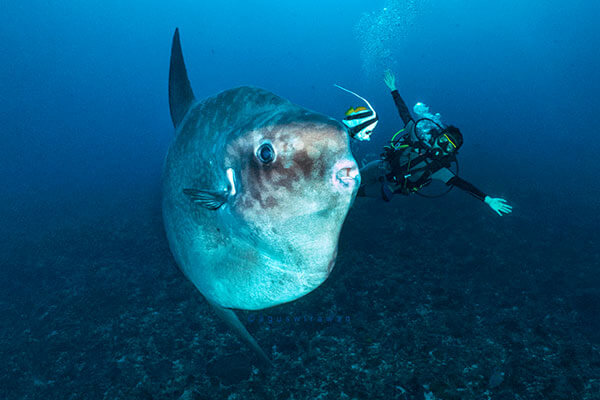
Bringing Your Underwater camera
Underwater camera are very recommended to capture these gentle giants. Wide-angle shots can make your photo more dynamic. Set the autofocus on 1 to 1.5 meters and you will be able to take a photo when they pass by you. Bubbles from your regulator can scare them so you should look for a position with a good angle and keep respecting their comfort.
When you want to approach the Mola Mola on its cleaning pose, please move slowly and carefully. Avoid using flash on your underwater camera because it could shock them and make them run away. Always remember not to chase them or try to touch them, just enjoy seeing and being with them.
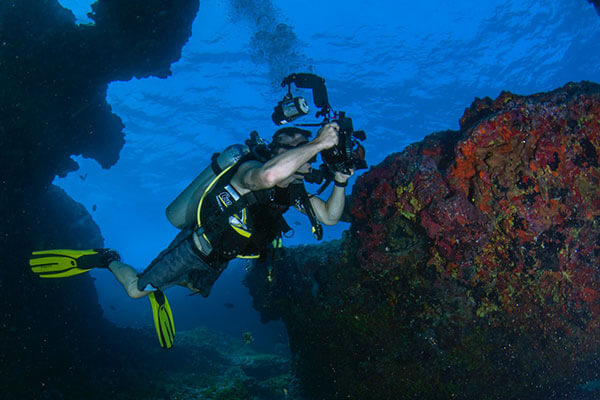
Reading Mola Mola Signs
Interaction with any marine creature, including the Mola Mola, requires a certain level of understanding of its behavior. Being able to read the Mola Mola’s signs plays a significant role in ensuring a safe and enjoyable experience. These gentle giants are generally slow swimmers, often lounging near the surface of the water to bask in the sun and be cleaned by smaller fish. However, they can dive deep when threatened. Therefore, observing their swimming patterns is crucial. If a Mola Mola appears to be moving away or diving deeper, it’s a clear signal that it feels threatened and it’s time to back off.
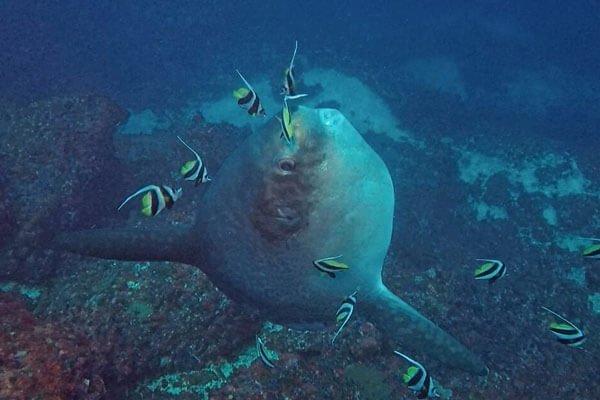
Steps to Dive with Mola Mola
Embarking on diving with Mola Mola, or sea sunfish, is an exciting prospect for any underwater adventurer. However, a successful and responsible encounter with these extraordinary creatures involves much more than taking risks. Here are the essential steps to ensure your dives with Mola Mola are enriching and respectful, giving you unforgettable memories while looking after the well-being of these amazing marine inhabitants.
Choose the Right Time and Place
Timing and location are key. The Mola Mola has specific periods and locations where it’s more commonly seen, especially in Bali. As we mentioned above, the best times to see Mola Mola is from July to October, and the most famous dive spot in Bali to see Mola Mola is Crystal Bay, Nusa Penida.
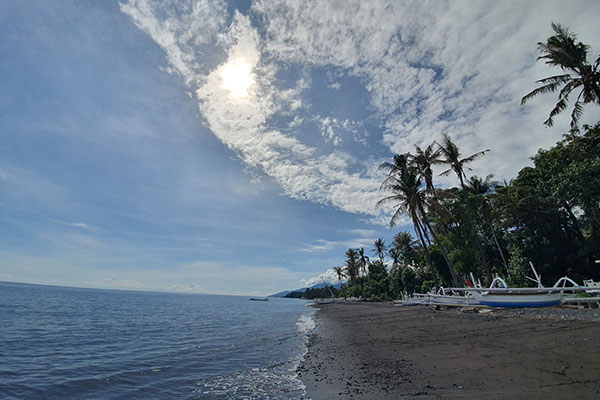
Acquire Appropriate Certification
Mola Mola are often found in deeper waters, which requires advanced open water diving certification. Make sure you have the necessary diving certification and experience before planning your dive.

Prepare Your Gear
Make sure you have all the necessary gear for your dive. This could include your BCD, regulator, fins, mask, wetsuit, and a dive computer. Ensure your dive gear is in good condition and that you’re familiar with its operation.
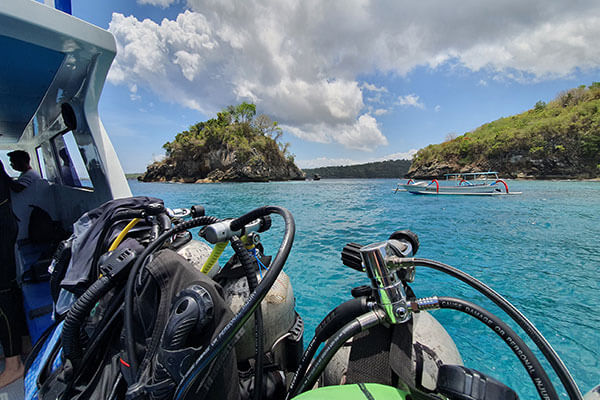
Buddy Up
Diving with a buddy or a guide, particularly one who has experience with Mola Mola, can enhance your safety and increase your chances of a sighting.

Scuba Diving with Mola Mola fish is not just about fun, it’s about being close to nature. Seeing these big fish swimming in the blue water is a special memory that you will remember forever. As divers, we need to be careful. We should not disturb the fish or damage their habitat. This experience can help us understand and respect the life in the ocean. It can make us want to help protect the ocean. After diving with Mola Mola, you will have an unforgettable experience. You will also feel more strongly about protecting the ocean. Get ready for a great adventure underwater with the Mola Mola fish!
Share this Article